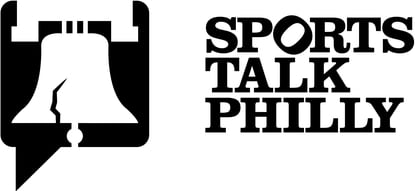Sam Bradford has decided to take a gamble on himself, announcing on Monday that he will play out the final year of his contract and become a free agent at the end of the season.
For Bradford, the decision is risky due to his injury history. However, the Eagles represent the best opportunity for him cash in big this offseason. The 27-year-old is familiar with Kelly's offense from his college days, and the head coach's system is notoriously quarterback friendly.
If Bradford truly wants to succeed as the Eagles' quarterback and earn a lucrative contract next offseason, then he'll need the running game to effective as it was in 2013.
Nick Foles' great 2013—27 touchdowns and 2 interceptions—was a product of the Eagles' top-ranked rushing attack more so than Kelly's system.
In 2013, the Eagles as a team rushed for a league-high 2,566 yards while averaging 5.1 yards per carry and 160.4 yards per game. As a result, Foles was not asked to throw the ball as frequently, averaging just 24.4 pass attempts per game which ranked 29th in the NFL among QBs with 300 or more attempts.
Less attempts mean fewer chances to make mistakes. For Foles, that was the case in 2013.
The Eagles' prolific rushing attack allowed Foles to flourish on play action passes. From weeks six to 17, 34.2 percent of Foles' drop backs were of the play action variety, which was the most in the NFL.
The running game opened up the field on play action plays, as Foles averaged 10.9 yards per attempt (1st in NFL). His play action QB rating of 136.7 was also tops in the league.
The Eagles' running attack was not as efficient in 2014, especially early on. LeSean McCoy, the 2013 rushing leader, got off to a slow start, averaging just 2.94 yards per rushing attempt and 54.6 yards per game through the first five weeks.
The running game's issues were related to the flux of injuries that plagued the Eagles' offensive line, as birds were without the services of Todd Herremans, Evan Mathis, Jason Kelce, and to a lesser extent, Allen Barbre for parts of the season. That doesn't include tackle Lane Johnson, who was suspended the first four games for violating the league's PED policy.
The inconsistencies of the running game forced Foles to handle more of a workload throwing the ball. Before going down with a collar bone injury, Foles had 299 pass attempts (4th in NFL) and averaged 37.4 pass attempts per game—almost 13 more than 2013.
He was asked to to throw more, which resulted in more mistakes. In three less games played than 2013, Foles threw almost four times the interceptions with nine, which ranked third in the NFL through week eight.
Despite the injuries on the offensive line, Foles still had plenty of time to throw. His 2.74 seconds of average time in the pocket was tied for third in the NFL. While he had more time, Foles was ineffective as a pocket passer, posting a meager 57.6 QB rating when given 2.6 seconds or more of average time in the pocket.
The running game's struggles didn't stop Kelly from calling play action passes, however. 31.9 percent of Foles' drop backs were play action plays, which ranked second in the NFL behind Russell Wilson. The space created by the running game in 2013 was not there though, as Foles averaged just 7.2 yards per attempt (18th in NFL) compared to his 10.9 mark in 2013.
As the inconsistent run game persisted, Mark Sanchez was asked to throw the ball more, resulting in more mistakes. His 309 pass attempts ranked seventh in the NFL from weeks nine to 17, while his 11 interceptions were tied for fourth.
With the acquisitions of DeMarco Muray and Ryan Mathews to go along with the speedy Darren Sproles, the Eagles have arguably the best running back unit in the NFL. They are primed to run the ball a ton which will take a lot of pressure off the quarterback. Of course, the offensive line is a huge question mark heading into the season, as Kelly's decision to cut ties with Herremans and Mathis leaves unproven guards to fill the void left by the two veterans.
If the offensive line pans out, and the running game performs like it did in 2013, then Bradford will not have to shoulder the same workload that Foles and Sanchez had to last season. Trying to duplicate Foles' 2013 24.4 pass attempts per game average would be a great place to start.
Less attempts will result in fewer chances to make mistakes. If Bradford wants his gamble to pay off big time, the less mistakes, the better.







